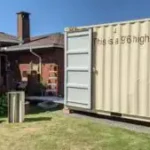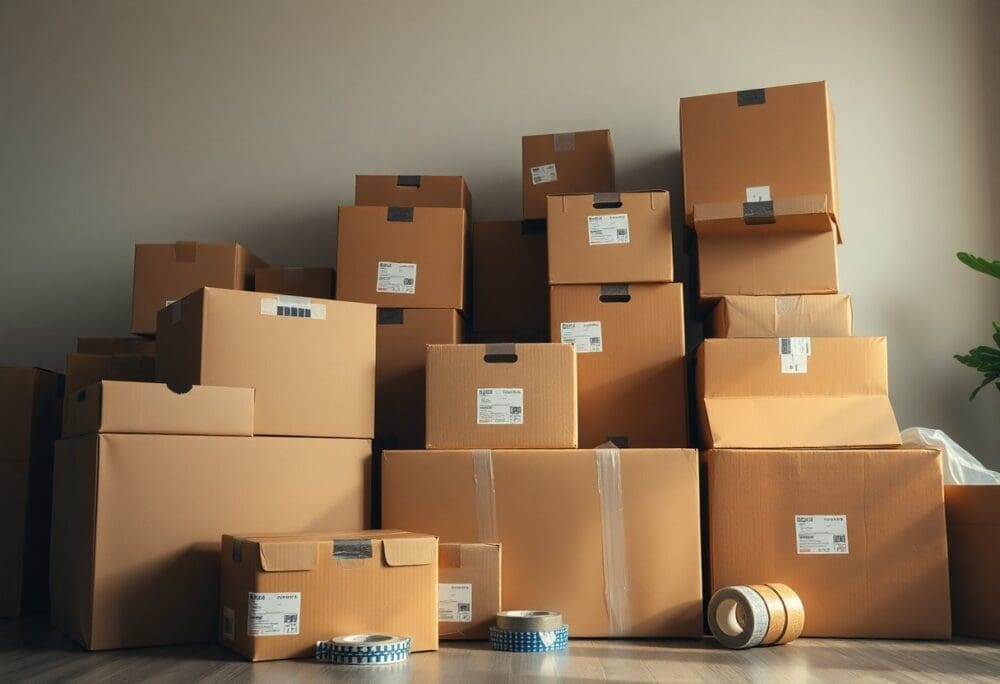It’s vital to choose the right boxes that movers use for your belongings to ensure efficient packing and safe transportation. Selecting the appropriate boxes not only protects your items but also makes the moving process smoother. In this guide, you’ll discover various box types, key features to consider, and expert tips on how to match your specific needs with the best packaging options. Dive in to learn how to optimize your moving experience with the right box selection.
Key Takeaways:
- Assess the size and weight of your belongings to choose boxes that provide adequate support and protection.
- Consider the type of items you are packing, opting for specialized boxes such as wardrobe or dish boxes for fragile or unique items.
- Evaluate the durability of the boxes, selecting high-quality materials that can withstand weight and handling during the moving process.
Understanding Your Moving Needs
Before you begin packing, it’s crucial to understand your moving needs thoroughly. This understanding will help you select the appropriate boxes and packing materials to keep your belongings safe and secure during the move. Consider factors like the size of your move and the nature of your possessions to make informed decisions about the packaging options available to you.
Assessing the Size of Your Move
Size matters when it comes to choosing the right boxes for your move. Evaluate how many rooms you’re relocating and the volume of items in each space. A larger move will require bigger boxes or more boxes in various sizes, while a smaller move may only need a few crucial boxes. This assessment ensures that you have enough supplies to accommodate all your belongings efficiently.
Identifying Fragile and Valuable Items
Among your possessions, it’s crucial to identify fragile and valuable items that need special care. These may include glassware, electronics, artwork, and heirlooms. By recognizing these items, you can choose boxes designed for protection, ensuring they are cushioned and secured properly during transit. This focus on fragile items will help prevent damage and give you peace of mind.
Hence, it’s vital to segregate your fragile and valuable items from the rest of your belongings. Consider sourcing specialized packing materials, such as bubble wrap or packing peanuts, to provide extra protection. If necessary, invest in sturdy, double-walled boxes that can withstand more pressure. Taking these steps will help ensure that your most treasured possessions arrive safely at your new location, with minimal risk of breakage or loss.
Researching Box Moving Companies
The process of selecting the right box moving company involves thorough research. You want to ensure the movers you choose are reliable, professional, and can meet your specific needs. Start by looking at local and national companies, gathering a list of potential movers to evaluate. Take note of their services, areas serviced, and how long they’ve been in the industry. This foundational research will help you make an informed decision.
Checking Credentials and Reviews
About your options, you will want to check each company’s credentials and read customer reviews. Verify that the movers are licensed and insured to protect your belongings during the move. Additionally, platforms like Yelp and Google Reviews can provide insights into previous customer experiences, which can guide your choice.
Comparing Services and Prices
Above all, it’s important to compare services and prices among different moving companies. A detailed breakdown will help you evaluate what each company offers and at what cost. Make a table to outline key aspects, including service offerings, estimated timelines, and any additional fees. This will provide clarity as you decide.
Comparison Table
| Company Name | Services Offered |
|---|---|
| Company A | Residential Moving, Packing Services |
| Company B | Commercial Moving, Storage Options |
Companies vary in the services they offer and the prices they charge. By detailing the differences in a comparable format, you can assess which option aligns best with your needs and budget. Don’t just look for the lowest price; consider the value of the services provided. This way, you can find the movers that offer the best balance of cost and quality.
Detailed Service and Price Overview
| Service Type | Price Range |
|---|---|
| Local Moves | $200 – $800 |
| Long-Distance Moves | $1,000 – $5,000+ |
Types of Boxes and Packing Materials
Now, when it comes to selecting appropriate boxes and packing materials, understanding the types available can make a big difference. Here’s a quick overview of necessary box types and materials:
| Type | Description |
|---|---|
| Standard Boxes | Ideal for most household items. |
| Wardrobe Boxes | Perfect for hanging clothes. |
| Dish Pack Boxes | Specialty boxes for fragile kitchenware. |
| Storage Boxes | Good for long-term storage. |
| Flat-Rate Boxes | Fixed price shipping options. |
Thou should select boxes that align with the specific requirements of your belongings.
Choosing the Right Size Boxes
By picking the right size boxes, you can ensure your items are secured during the move. They should be large enough to fit your items without excessive space, yet not so large that they become difficult to lift or carry. Think about the items you plan to pack and group similar sizes together for optimal organization.
Selecting Durable Packing Materials
Choosing durable packing materials is necessary to protect your belongings. Focus on items like bubble wrap, packing paper, and strong tape that can withstand the rigors of moving. This will not only protect your valuables but also make your packing job easier as you manage your items.
Further, using high-quality packing materials will contribute to a smoother moving experience. For instance, bubble wrap provides cushioning for fragile items, while sturdy cardboard boxes offer the support necessary to keep heavier possessions secure. Prioritize these materials when preparing, and consider investing in specialty items like foam inserts for unique shapes, to further ensure the safety of your belongings.
Pricing and Budget Considerations
Despite the complexity of moving, selecting the right boxes can significantly influence your budget. To learn more about how to make cost-effective decisions, check out our guide on How to Choose the Right Boxes for Your Move. Understanding the cost of materials and services is crucial to ensuring you stay within your financial boundaries.
Understanding Cost Factors
An effective moving strategy involves understanding various cost factors that can affect your budget. These include:
- Box sizes and types
- Quality of materials
- Delivery and pickup fees
- Additional services such as packing
Thou should weigh each factor in relation to your specific needs.
Creating a Moving Budget
At the outset of your planning process, it’s vital to create a moving budget that outlines your expected expenses. This will help you prioritize crucial purchases and services while avoiding unexpected costs during the moving process.
Also, consider including allowances for unplanned expenses, such as additional packing materials or last-minute service adjustments. By being thorough in your budget planning, you can ensure that you allocate resources wisely and avoid financial surprises as your move approaches.
Tips for a Smooth Moving Experience
To ensure a seamless moving experience, focus on preparation and organization. A little planning can make a significant difference. Consider these tips for a successful move:
- Start packing early to avoid last-minute rush.
- Use quality boxes and packing materials to protect your belongings.
- Sort items by category to streamline unpacking.
- Enlist help from friends or hire professional movers for efficiency.
- Create a moving timeline to keep you on track.
Perceiving the importance of these tips can greatly enhance your overall moving process.
Organizing and Labeling Boxes
Before you begin packing, create a clear system for organizing your boxes. Designate a specific area for each category of items and label them accordingly. This will save you time during the unpacking process and help you identify vital items quickly.
Communicating with Movers
Along the way, maintaining open lines of communication with your movers is vital. Sharing your specific needs and questions ensures they understand your expectations and can address any concerns promptly, leading to a more efficient moving experience.
Labeling your boxes effectively is vital for a smooth transition. Clearly mark each box with its contents and the room it belongs to in your new home. This simple practice enables you and your movers to place boxes in the correct locations, making unpacking more organized and less overwhelming.
Common Mistakes to Avoid
After selecting the right boxes, it’s important to steer clear of common mistakes that can lead to complications during your move. Failing to assess the size and quality of the boxes, disregarding the packing technique, or underestimating the weight of your items can all result in damage to your belongings or added stress during the moving process. Pay attention to these pitfalls to ensure a smooth transition.
Overpacking vs. Underpacking
Along the journey of packing, you might find yourself torn between overpacking and underpacking. Overpacking can lead to heavy boxes that are difficult to lift and transport, risking injury or damage. Conversely, underpacking may leave your items unprotected, resulting in breakage. Strike a balance by optimizing box sizes and using appropriate padding materials to safeguard your belongings.
Ignoring Insurance Options
Around the moving process, many often overlook the significance of insurance. It’s vital to consider what happens if something gets damaged or lost during the transition. Your belongings hold sentimental and monetary value, and without the right coverage, you may face unexpected replacement costs. Understanding your insurance options can provide peace of mind and protect your investment.
The types of insurance available often vary based on the moving company. Some may provide basic coverage, which compensates you for damages based on weight, while others offer full-value protection, ensuring you receive reimbursement for the actual value of your items. To make an informed decision, review your insurance options carefully and consult with your moving company about the best coverage for your needs.
Summing up
With these considerations, you can choose the right boxes movers use for your belongings by assessing the size, type, and strength of the boxes according to your specific needs. Evaluate the nature of your items—fragile, bulky, or lightweight—to select boxes designed to protect them during transport. Additionally, factor in your budget and the distance of your move. By prioritizing these aspects, you ensure that your belongings will be safely and securely transported, providing peace of mind throughout the moving process.
FAQ
Q: What factors should I consider when choosing boxes for my move?
A: When identifying boxes for your move, consider the size and weight of the items you need to pack. Smaller boxes are ideal for heavier items like books and kitchenware, while larger boxes work well for lighter items such as bedding and linens. Additionally, think about the fragility of your belongings; use reinforced boxes for fragile items to provide extra protection. It’s also important to assess how many boxes you will need based on the volume of your belongings, and whether you prefer to rent or purchase boxes.
Q: Are there specific types of boxes recommended for certain items?
A: Yes, there are specialized boxes designed for various categories of items. For example, wardrobe boxes come with a hanging rod for transporting clothes, while dish pack boxes are designed with extra padding to safeguard fragile dishware. Electronics boxes often include foam inserts for secure packing of devices. Investing in the proper boxes for specific items can help ensure that your belongings remain safe during transport.
Q: Where can I find durable moving boxes and packing materials?
A: Durable moving boxes and packing materials can be sourced from various places. Local moving supply stores frequently stock a range of box sizes and materials. You can also find moving kits offered by moving companies, which typically include a selection of boxes and packing supplies. Additionally, online retailers provide the convenience of ordering boxes delivered directly to your home. If you’re on a budget, consider asking for used boxes from local businesses or checking community forums for free options.





